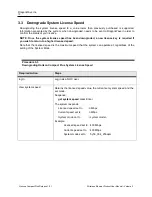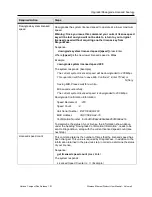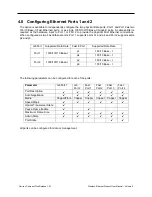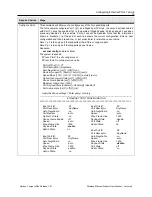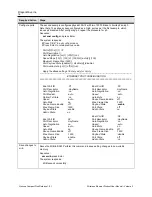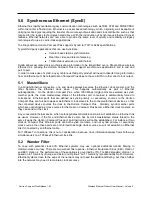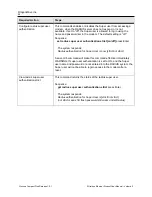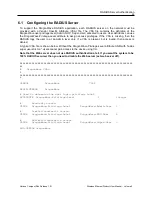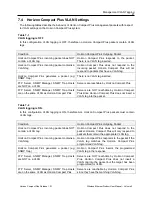
Horizon Compact Plus Release 1.0.1
Wireless Ethernet Product User Manual
– Volume 2
5.0 Synchronous Ethernet (SyncE)
Ethernet has rapidly overtaken legacy communication technologies such as TDM, ATM and SONET/SDH
within the carrier infrastructure. Ethernet is a packet based technology, which, originally, was incapable of
carrying technologies requiring the transfer of accurate synchronization and clock distribution such as that
required for the legacy technologies noted above. With the introduction of Synchronous Ethernet (SyncE)
features, Ethernet networks are now able to provide the same level of quality and reliability as legacy
technologies for use in carrier class applications.
The DragonWave Horizon Compact Plus supports SyncE to ITU/T G.8262 specifications.
Typical third party applications that can use SyncE are:
Cellular base station synchronization
Real time video and teleconferencing
TDM network extension over Ethernet
SyncE allows accurate clock synchronization information to be transmitted over a DragonWave wireless
Ethernet link, allowing the Horizon Compact Plus to support synchronous applications, end to end and
port to port.
In order to make use of syncE, any synchronous third party product will need to take its timing information
from an Ethernet port. Note that Horizon Compact Plus does not have a BITS or other direct clock output.
5.1 Master/Slave
In a Gigabit Ethernet connection, one end device always becomes the Ethernet clock master, and the
other becomes the Ethernet clock slave. This happens automatically as part of Ethernet
autonegotiation. On the Horizon Compact Plus, when 1000 Mbps (GigE) ports are selected as syncE
member ports, the clock master/slave status of the Ethernet port concerned is automatically forced to
correspond. Ethernet ports that are defined as syncE primary, or secondary, sources to the Horizon
Compact Plus, are forced to appear as Ethernet clock slaves to the connected Ethernet devices, so that
the connected device sources the clock to the Horizon Compact Plus. Similarly, syncE member ports
which are not defined as clock sources for the Horizon Compact Plus become Ethernet clock masters, so
they can send out the clock.
Any connected Ethernet device which autonegotiates master/slave status, will establish an Ethernet link
as usual. However, if the far end Ethernet device also has its clock master/slave status forced to the
same type as the Horizon Compact Plus port, an Ethernet link will not be established. For instance, if two
Horizon Compact Plus Ethernet ports are both syncE members, and not syncE primary or secondary
clock sources, then these ports are both forced to be GigE clock sources, so will not establish an Ethernet
link if connected by an Ethernet cable.
For 100baseT connections, this is not a consideration, because clock information always flows both ways
simultaneously on a 100baseT Ethernet clock link.
5.2 Wander Filter
To cope with potential clock drift, Ethernet systems may use optional additional wander filtering to
maintain clock accuracy. There are two wander filter options
– Ethernet Equipment Clock (EEC) Option 1
and EEC Option 2. The performance of these options is governed by ITU-T G.8262 standard. Option 1 is
based on E1 hierarchy (Europe and Asia) and Option 2 on T1 hierarchy (predominantly North America).
Ethernet systems close to the edge of the network may not need the additional filtering, but those further
into the network may need it to maintain clock accuracy.








